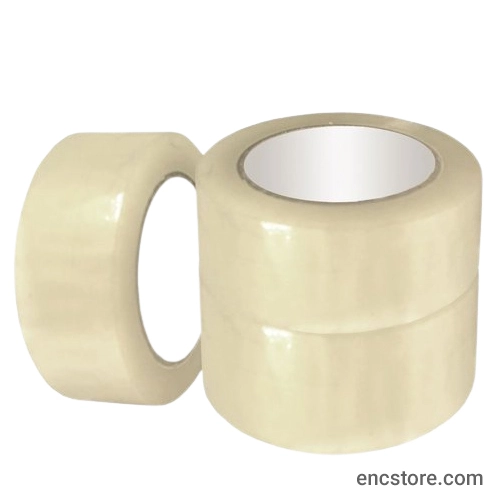The intriguing journey of self-adhesive tapes began in 1845 when Dr. Horace Day introduced this revolutionary concept. Since then, these tapes have evolved into a tapestry of types, each playing a vital role in simplifying the intricate processes of packaging and labeling. In this captivating exploration, we delve into the diverse world of self-adhesive tapes, sprinkled with intriguing facts that make them more than just sticky strips.
Types of Self-Adhesive Tapes:
Transparent BOPP Packing Tape:
Did you know that this common tape, used for everything from gift-wrapping to hanging charts, is not just transparent but also UV ray-resistant, making it a versatile packaging ally?
Brown BOPP Packing Tapes:
Beyond providing water and UV protection, these tapes seamlessly blend with cardboard boxes, adding a visually appealing touch to the packaging game.
Colored BOPP Packing Tapes:
Colorful Coding: The material might be similar to its counterparts, but these tapes bring a pop of color to the packaging world, aiding in quick and efficient identification through a clever color-coded system.
Double Sided Tape:
Heat-Defying Magic: Crafted with silicon, this tape not only sticks things together but does so with resilience against high temperatures. Bonus: It's removable without leaving a mark, making it a magical adhesive companion.
Acrylic Foam Double Sided Tape:
Flexibility & Strength: This tape is made from Polyurethane Gel that's not just strong but also flexible. It's like having a robust tape that adheres strongly without being harsh on surfaces.
Eco-Friendly Tape:
Green Revolution: This tape is not just practical but also environmentally conscious. Made from paper, this bio-degradable tape makes a positive impact on both your packages and the planet.
How Self-Adhesive Tapes Unravel Packaging & Labeling:
Packing Cost Reduction:
Gone are the days of sealing with strings or wax. Self-adhesive tapes not only eliminate the need for additional agents but also combine sealing and wrapping, reducing production costs.
Impact Absorption: Modern tapes are like bodyguards for your packages, absorbing impacts during transit and adding an extra layer of durability to the items inside.
Provides a Protective Seal:
Air-Tight Marvel: Unlike sealing wax of the past, today's tapes create an airtight seal around openings, safeguarding packages against environmental foes like moisture and dust.
Conclusion:
The world of self-adhesive tapes is not merely about sticking things together; it's a dynamic realm of innovation and practicality. From UV-resistant transparency to eco-friendly endeavors, these tapes weave a tapestry of possibilities, transforming packaging into a fascinating blend of efficiency and creativity.

Comments
Post a Comment